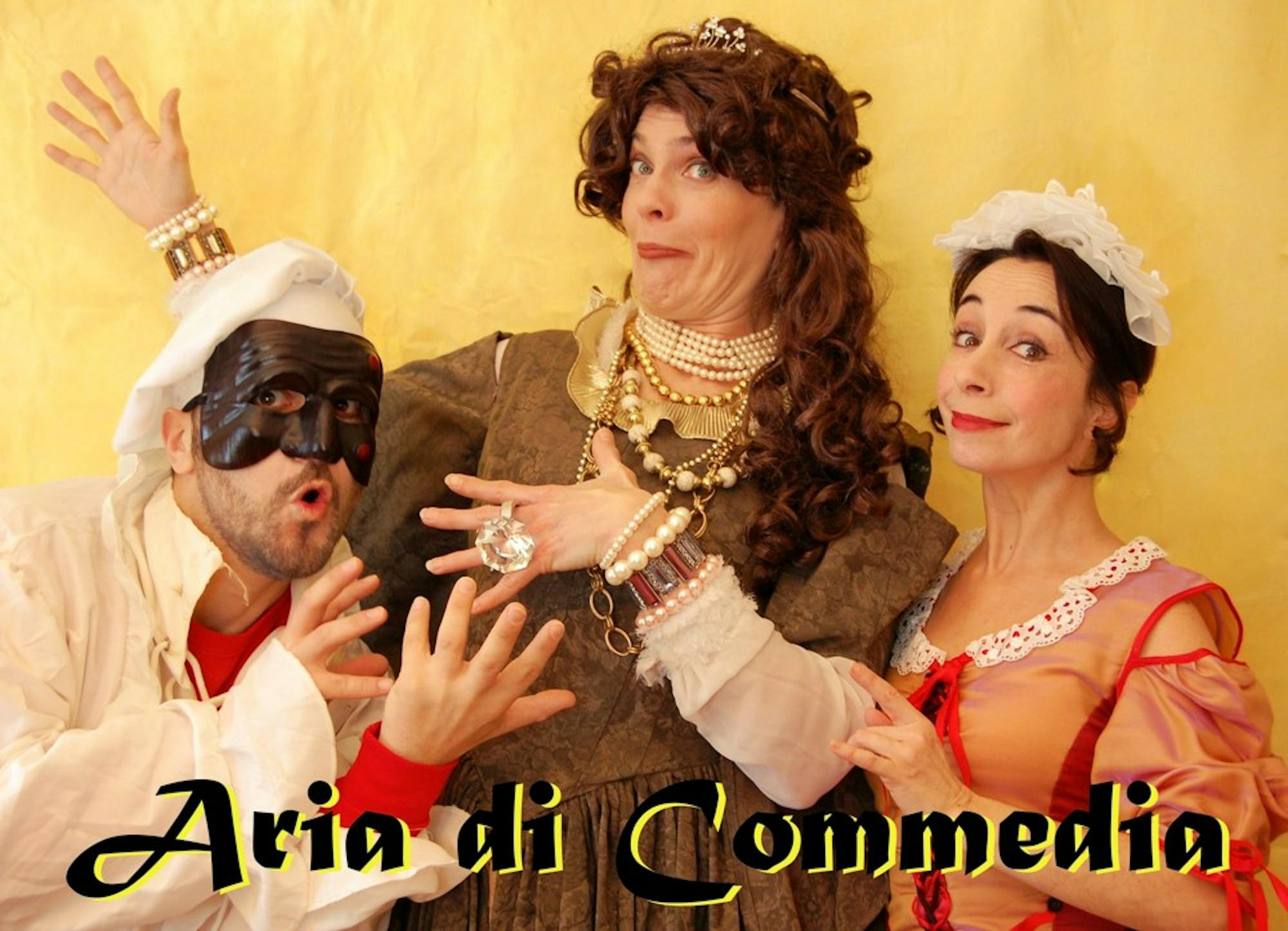Collis Common Ground will be bustling with activity tonight at 7 p.m. when the Pazzi Lazzi theatre troupe take the stage to perform “Aria di Commedia — An Evening of Commedia dell’Arte and Italian Renaissance Music.” Sponsored by the Office of the Associate Dean of Arts and Humanities, the show is free and open to all. The show is primarily in English but includes some Italian as well.
“Aria di Commedia” is the main theatrical production of Pazzi Lazzi, a Boston-based Commedia dell’Arte group. Commedia dell’Arte, or simply Commedia, is widely considered by historians to be the first form of professional theatre.
Originating in Italy in the 16th century, Commedia is a traditional style of street theatre that features characters derived from easily recognizable archetypes, such as the nimble and clever servant Harlequin and the greedy old man Pantalone. It primarily uses masks, gestures and movements to capture its audience in a fast-paced, wildly humorous story.
Unlike the heavily scripted and rehearsed theatre productions that most of us are familiar with, however, the Commedia is improvised by the actors, who are only roughly guided by basic scenarios. French and Italian professor Nancy Canepa, who organized the show and invited Pazzi Lazzi to Dartmouth, stressed the importance of improvisation in Commedia.
“There would be a set of stage directions that were tacked to the side of the stage,” Canepa said. “All of the gags and formulaic language that went with each ‘type’ — that was stuff all the actors pretty much knew by heart. It wasn’t pure improvisation, though. When you’ve been acting a type for 30 years, you have a lot in [your head]. You don’t necessarily have to improvise.”
The incorporation of improvisation in the Commedia and its replacement of verbal communication with masks and gestures were indeed highlights for Jerrel Catlett ’18. Catlett, a student in Canepa’s class, Italian 23, “Marvelous Worlds: The Literature and Culture of Seventeenth Century Italy,” attended a teaching workshop in which Pazzi Lazzi helped acquaint students with Commedia. Both Catlett and Canepa said that the workshop emphasized the art of physical comedy and how one can rely on one’s body rather than words to convey emotions.
“What I found really interesting was the lack of focus on a script,” Catlett said. “A lot of the actual performance is incredibly dependent on gestures, very evocative movements, facial expressions and these masks, which really communicate the story much better in a way that words can’t.”
Having never ventured into the realm of acting whatsoever prior to the workshop, Catlett said he gained a newfound admiration for thespians after the workshop.
“There was a lot I had not really appreciated about how much goes into making a television show or play performance,” Catlett said. “How athletic you need to be in order to perform these different dances and movements — the bar for that is incredibly high.”
A second workshop was held at Occom Commons yesterday and was open to the larger Italophile audience at Dartmouth. Canepa said that the workshop highlighted the history and features of Commedia dell’Arte and explored some of the famous stock characters and masks.
According to Canepa, watching a Commedia can be an enriching experience due to its lasting impact on the comedies we are familiar with today. She spoke about how the style of humour known as “slapstick” is rooted in a device used in Commedia shows.
“The word ‘slapstick’ actually derives from a stick that one of the main Commedia characters, the Harlequin, carries with him and uses to clobber other characters with,” Canepa said. “That gives you an idea of the influence of the Commedia on comedic acts like the Marx Brothers, the Three Stooges, Buster Keaton and Charlie Chaplin. They all incorporate elements of this very physical humor.”
Certain audiences may dismiss the Commedia as a flippant form of humor. However, Canepa believes that the Commedia’s use of physical humor should not be confused for frivolity, as the comedy employs more serious subtexts as well.
“The Commedia dell’Arte, in its heyday, was often caustic in its social satire … characters who represent traditional values, livelihoods and institutions are consistently made fun of and humiliated,” Canepa said. “Women and men regularly transcend their gender roles, and servants, the masterminds of the Commedia, generally get the best of their masters.”
The revival of traditional art forms like the Commedia also serves a larger purpose of helping people reconnect with these influential genres. Canepa feels that audiences are often not able to identify the source of the influences found in various contemporary performances, and shows such as “Aria di Commedia” help deliver necessary knowledge of how art progresses.
“Art forms just don’t pop up like mushrooms overnight,” Canepa said. “There is value in knowing how anything develops, like a political system or art form.”
Correction Appended (February 2, 2017):
The article incorrectly stated that the event was sponsored by the French and Italian department. The Office of the Associate Dean of Arts and Humanities sponsored the event.




